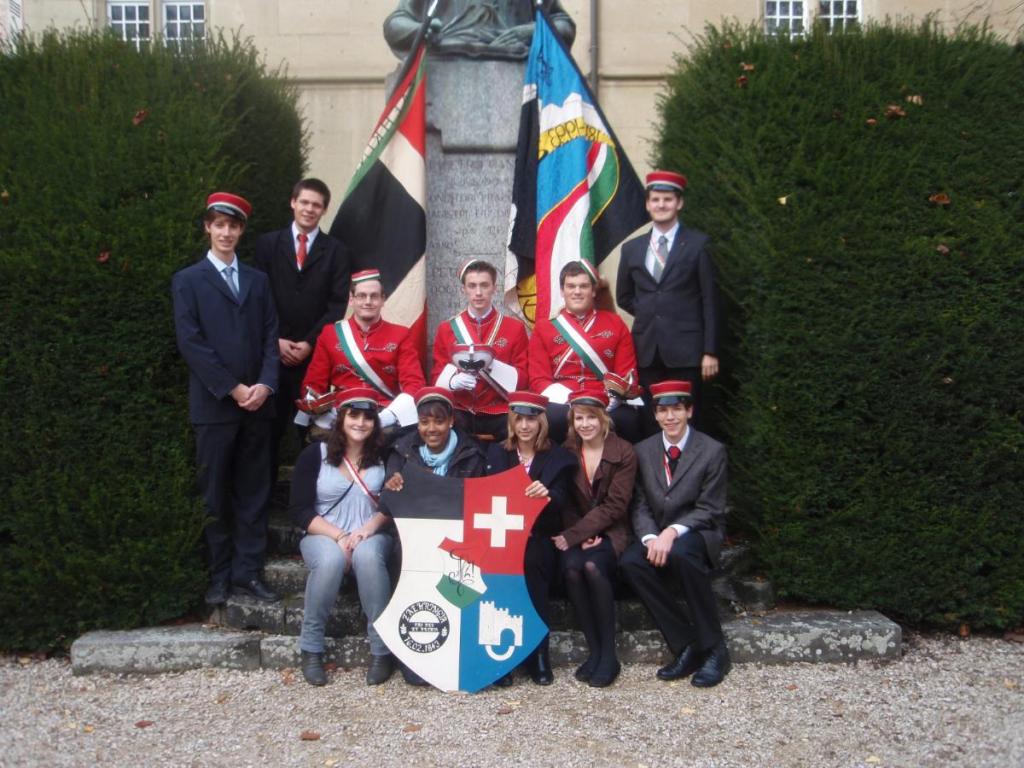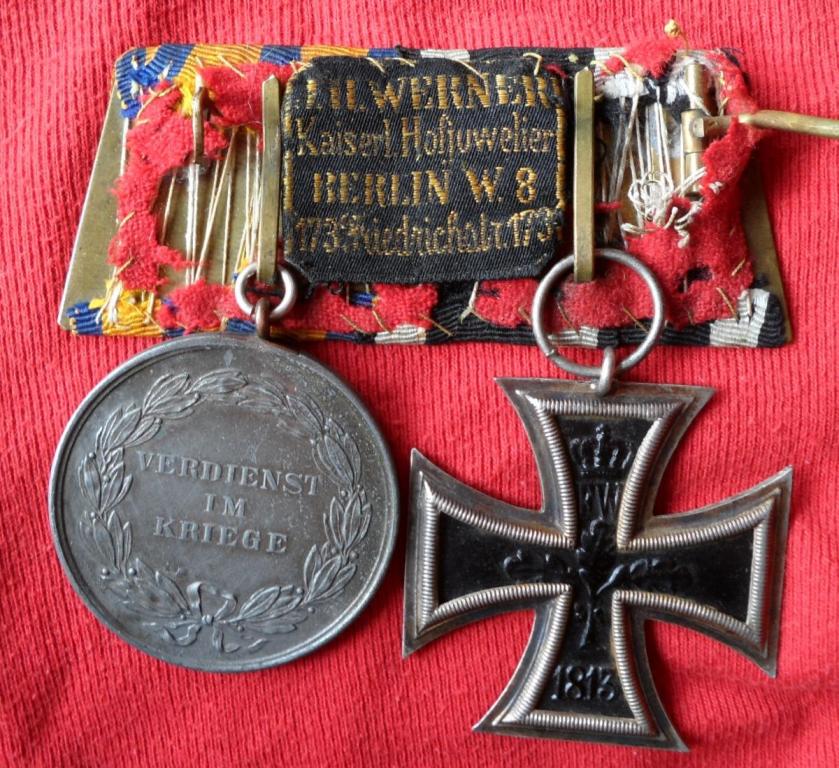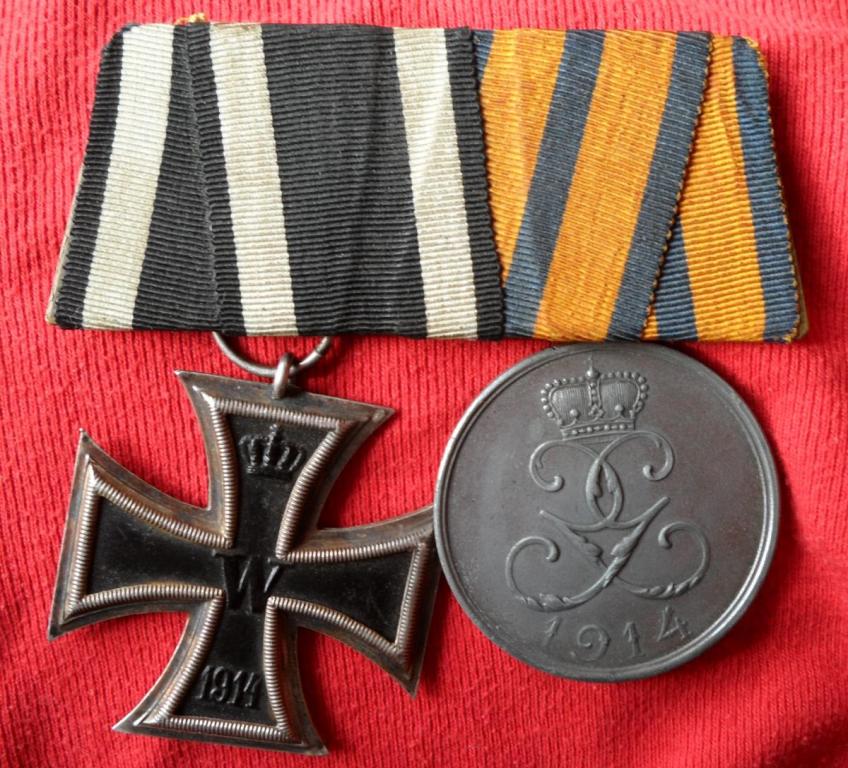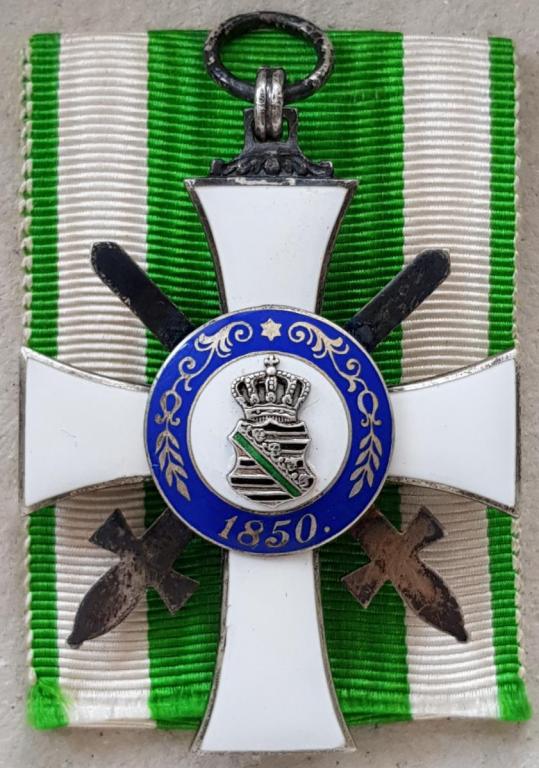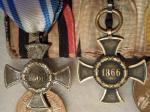
Valter
Active Contributor-
Posts
396 -
Joined
-
Last visited
-
Days Won
1
Content Type
Profiles
Forums
Blogs
Gallery
Events
Store
Everything posted by Valter
-
I'll add some more info to the old topic: Student organisations (corpuses, burschenschaften) were and still are active in many German and german-speaking universities; today, the tradition is rejuvenated in many non-german conutries (Poland, Baltic, Hungary ...). Some organisations are male-only, others are for both genders. Some fraternities have nowadays some right-wing political conotation, while others do not. https://en.wikipedia.org/wiki/Studentenverbindung Fraternity colors are usually three, chosen more or less randomly, and do not necessary represent th land of origin. The narrow ribbons are used either as marking the beer/wine/schnaps mugs/glasses, but the long sash-style ribbon is a sign of membership. The broad sash (not inculded in Claudius grouping) was/is worn by "chargierte" - the leadership of the society, while ordinary members wear narrow sashes. The leadership consist of senior (the leader), consenior (2nd in rank) and subsenior (3rd in rank), but there are also other functionaries, like "fuxmajor" (who is in chardge for "fuxes" (foxes) - rookie members in ther first year in society; fuxmajor wears a fox tail on his cap). Membership in society is usually life-long, regular members are those who are still students, and former students, alumni members or "old guard" are called "filisters". I included a picture of Swiss fraternity Zaringia from Freiburg im Üechtland, which is inclusive for women too. The chargierte wear broad sashs and parade uniforms with fencing swords, the regular members wear in this picture caps only and their membership sashes (with all three colors), and persons in first row are fuxes, who wear sashes with two colors only.
-
An old topic, but I found something: A german book about Bagdad battle: http://www.sehepunkte.de/2019/02/32092.html There were some German medical personel in Mesopotamia: https://wehrmed.de/geschichte/ein-sanitaeter-der-deutschen-armee-als-augenzeuge-anklaeger-des-genozids-an-den-armeniern-im-ersten-weltkrieg.html and also some transport units, according to this picture: https://visual.keystone-sda.ch/en/web/guest/preview?p_p_id=ch_keystone_liferay_preview_portlet_PreviewPortlet&p_p_lifecycle=0&p_p_state=normal&p_p_mode=view&_ch_keystone_liferay_preview_portlet_PreviewPortlet_javax.portlet.action=%2Fpreview%2FnextPage&_ch_keystone_liferay_preview_portlet_PreviewPortlet_closeUrl=https%3A%2F%2Fvisual.keystone-sda.ch%2Fen%2Fweb%2Fguest%2Fresult%2F-%2Fresult%2Fpaging%2F1%3F_ch_keystone_liferay_result_portlet_ResultPortlet_searchCriteria%3Drelevancy%3Ai5_object_name%3A%28%22ERSTER%2BWELTKRIEG%2BIRAK%2BDEUTSCHE%2BLASTWAGENKOLONNE%2BIN%2BMESOPOTAMIEN%22%29%26ts%3D1622758057051&_ch_keystone_liferay_preview_portlet_PreviewPortlet_searchCriteria=relevancy%3Ai5_object_name%3A("ERSTER WELTKRIEG IRAK DEUTSCHE LASTWAGENKOLONNE IN MESOPOTAMIEN")&_ch_keystone_liferay_preview_portlet_PreviewPortlet_currentLayout=detail&_ch_keystone_liferay_preview_portlet_PreviewPortlet_currentImageOid=74834930 Last but not least, you have a really nice bar here!
-
Simius, I greatly appreciate your explanations and gratefuly learn you and other experienced members who are willing to share knowledge. I also appreciate chechaco's intial post with calculations, spasibo bolšoje! When Simius explained about on-going argument among Meckelnburg specialist about the autheniticity of these crosses I go an idea. Did anyone try to analize the metal content of those crosses? I'm aware most collectors don't have resources for that, but perhaps it would be possible with analysis of metal (a few shreds of original cross) to compare the composition of these crosses with composition of late-19th century cannon bronze (which should be recorded in some period manufacturing documents). I'm not a metallurgist so I don't know if this is possible, but I believe it should be. The same way as collectors of paintings analyze the paint of supposed original vs. fake paintings and compare these with known components of old paint.
-
Dear gentlemen, I need your help in evaluation of this Saxon Albrechtsorden. I did a forum research but didn't find a conclusive close-up photos. It is supposed to be Roesener from Dresden, but I have concerns as medallion details are quite pitted. A genuine worn piece or fake? Thank you so much in advance!
-
SHOW US WHERE YOU KEEP / STORAGE YOUR MEDALS.
Valter replied to Kallarati Heroik's topic in Southern European & Balkan States
A bit old topic, but maybe we should revive it. I think Kallarati intended to start a broader theme of storage of medals and other collectibe artefacts. It is important to store any such items in an environment hat will protect them from deterioration. Different materials have different demands, but generally: any light, especially direct sunlight is very damaging in the long run. Same goes with excessive humidity, but too dry environment is also no good. There is a good site of US national park service, with plenty of articles about storage of different artefacts. It mostly focuses on other objects than medals, from folclore items to pottery, paper items to motor vehicles, but it is worth to browse (and downolad and print) to get the general idea of environmental effects on different materials: https://www.nps.gov/museum/publications/conserveogram/cons_toc.html Specific to medals and other smaller militaria objects: Display frames of different kinds are very nice, but they must be kept in places with as little environmental fluctuations (humimidity, temperature ...) and off any direct light. So hanging them in your dining room (with sunlight and fumes from cooking, smoking etc.) is not a good idea. Padded drawers are great, but you should keep in mind what materials those drawers are made of. Many woods, including plywood and other composites, coniferous woods (pine, spruce ...) and oak do emit vapors that are harmful to both ribbons and many metals too. The same goes for cheap plastic (pvc). Polietylene is better, and glass is inert material, but air-tight sealed containers aren't good either, as that prevents "breathing" and traps humid, which is harmful. So, wooden boxes, drawers, or boxes made of wood, cardboard and glass are okay, as long as they are made of inert, ph neutral materials (neither acid nor basic). Metal drawers are fine, I use two drawers I got from old doctors office, they were intended for storage of instruments and medicines and are made from dust-painted metal so they should be inert. Most modern paper/wrapping materials are acidic and not suitable, so I use paper wraps of ph neutral (acid-free) paper tissue. You can get these from different suppliers, but artistic drawing/painting paper (you can get them in any art supply shop) is appropriate and you can get it relatively cheap (a scratchbook with 50 or so pages costs under 20 €). For paper items and photos, I use high-quality albums and sleeve pages that you can buy in filately/numismatic shops (intended for first-day covers or postcards) and are made of acid-free materials. How much would you invest in storage, depends of the fact what items do you collect and how much are they worth. For cheap pins/badges or soviet post-ww2 medals a cheaper variant is acceptable, but for more valuable objects you should invest more. That way you preserve your collection as historical artefact (we often say we are only custodians of those items that will be passed to next genetrations and preserved as well as possible for the history), and also its monetary value. -
Serbian / Croatian / Bosnian helmets with inscriptions
Valter replied to joaobr's topic in Southern European & Balkan States
Just a small corection - there were also december and june classes, or intermittent classes. The september class was somehow "elite," as these were usually guys who would go to university (they ended one year service in august/september, and in october university lectures in Yugoslavia started). Stjepan Beržaj is Croat, no doubt. Nice and intersting helmets here. Just one warning - there's abundance of fake balkan war helmets, which are just JNA/YPA helmets (which are really abundant) with added paintings, inscriptions, stickers ... Years ago one such scrupuous seller posted a pic of "croat war helmet" for sale with visible traces of spray-painting on the ground around it. The helmets posted here seem genuine/unbotched to me. -
Thank you gentlemen for pointing this out. I've seen these and always considered them fake - too many too good bars from the same seller. (the photo background is often the same too). I see too a characteristic folding of the last ribbon around the backplate - as the plate would be just a little bit too narrow/short.
-
I can't agree completely with laurentius. Majority of bars we see are expert-made by tailors, and home-made budget bars are usualy cruder than this one - with safety pins, cardboard instead of metal plate etc. The one who didn't have money for expert-made bar, usually won't have money for buying components, i.e. metal backing, and he would use the ribbons he got awarded plus some readily-availabe home supplies. This one looks in the middle - professional components (ribbons, metal backing), yet lacking the craftsmanship of the professional tailor. It is possible it is home made, but I have doubts. Very new look, without any traces of wear also raises some doubts. If a veteran would made a bar at home, he would made it for wearing, so at least some patina, fading etc. would be expected.
-
Odulf, you are right. These things were possible, but very rare. The grenadier on your pic has party long service awards (both bronze and silver, as it should be with anyone who got silver grade), but not army long service award. With such strange combinations, everyone should be very cautious. I still believe these bars are fake, too many things wrong. To Nicolas, I searched a bit on the web but couldn't find exact criteria for NSDAP LS decorations. As far as I understand, yes, some kind of full-time involvement in party business was necessary, not mere long-term membership.
-
They can be identified as c**p. Westwall miniatures (these little pieces on brown ribbons) were never used on real ribbon bars (but on lapel bows for civil dress. And silver NSDAP long service without bronze one? They should be worn together. And how can some professional NSDAP official at the same time be a professional soldier in Wehrmacht? NSDAP long service awards were not awarded just for party membership, but only for professional service in party formations, and not even all of them. Otherwise they would be much more common, according to number of nazi party members. ;-)
-
I have to say this bar doesn't look period to me. The stitching is very messy, with thicker thread than usually seen, and ribbons are placed really sloppy. It appears the ribbons are placed to the bar recently, hard to say if they are original or not. Maybe they even are, but the rarer Duppel ribbon was not available to the seller (=faker). The hardware and medals appear original to me. So probably a bar put together from (partly or completely) original parts, with very bad craftsmanship. It could also be repaired by the owner somewhere in time, without proper replacement parts (ribbons) and skills. Did you check the ribbons with black light? And tested the thread wether cotton or synthetic?
-
A nice and often overlooked award. I got my first one from a friendly member here, but recently got another one in a group... just to realize there are two variants, most notably are lions - one has skinnier and the other more builded arms and legs, but there are differences on averse, ring and loop too. The medal with skinny lion is also thinner. (the later has replacement ribbon, unfortunately).
-
Uncategorised Post WW1 awards of Austro-Hungarian decorations
Valter replied to Valter's topic in Austro-Hungarian Empire
Tifes, thank you very much for such a detailed explanation! Great information and historical background.

